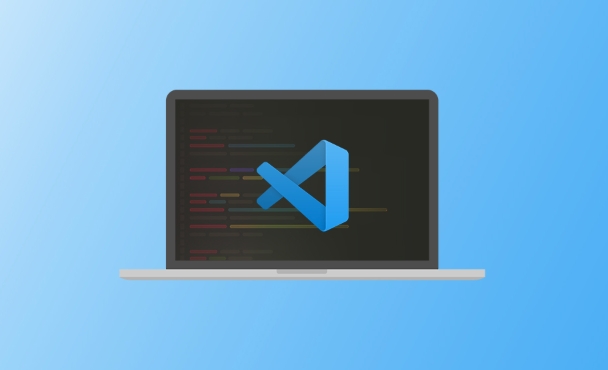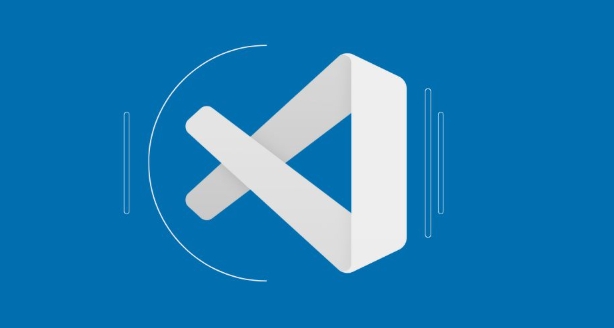In VS Code, the fastest way to jump to symbols in the current file is to use the "Go to Symbol in File" function, which default shortcut keys are Ctrl Shift O (Windows/Linux) or Cmd Shift O (Mac); after pressing the shortcut key, enter keywords to filter the symbols and press Enter to jump; if the shortcut key is invalid or the list is incomplete, it may be due to the file type not supported, the language plug-in is missing, or the file is not loaded; you can try to install the plug-in, check file type recognition, or wait for the analysis to complete; other related functions include entering @ symbol search in the command panel, jumping across files using Go to Symbol in Workspace (Ctrl T), and viewing and jumping the symbol structure through Outline in the sidebar.

In VS Code, the fastest way to jump to symbols (such as functions, variables, classes, etc.) in the current file is to use the "Go to Symbol in File" function. Its default shortcut keys are Ctrl Shift O (Windows/Linux) or Cmd Shift O (Mac). This feature is especially suitable for quickly locate code structures in large files.

How to use Go to Symbol shortcut keys
When you press the shortcut key, a search box will pop up at the top of VS Code, which lists all symbols of the current file (such as function name, class name, variable name, etc.). You can directly enter keywords to filter the target symbol and press Enter to jump.
- If you remember a part of the function name, such as
handleUser,usercan find it - Press the up and down keys to switch options, and Esc can cancel the operation
- In supported languages (such as JavaScript, Python, Go, etc.), it can identify most common structures
Note: If the current file does not define any recognizable symbols, this function will be displayed as empty.

FAQs and Alternative Usages
Sometimes you will find that the shortcut keys do not work, or the list pops up is incomplete, which may be the following reasons:
- The current file type is not supported (such as plain text
.txtfiles) - Missing language plug-in, for example, Python requires Python plug-in to be installed
- The project is not loaded, or the file is too large, resulting in parsing failure
If you have these problems, try:

- Install official plug-ins for the corresponding language
- Check whether the file is correctly recognized as a certain language (the status bar in the lower right corner is displayed)
- Wait for a few seconds for the editor to complete the analysis
Other related tips
In addition to "Go to Symbol in File", VS Code has several similar navigation functions that are also useful:
- @ Symbol Search : Enter
@when opening the command panel (Ctrl P), and then continue to enter the symbol name. Similar effects can be achieved. - Go to Symbol in Workspace (Ctrl T) : Find symbols throughout the workspace, suitable for cross-file jumps
- Outline : View the structure of the current file in the sidebar, click to jump
These functions can greatly improve the speed of your positioning in your code.
Basically, if you master the shortcut keys and usage methods of "Go to Symbol in File", the efficiency will be greatly improved when writing code.
The above is the detailed content of VS Code go to symbol in file shortcut. For more information, please follow other related articles on the PHP Chinese website!

Hot AI Tools

Undress AI Tool
Undress images for free

Undresser.AI Undress
AI-powered app for creating realistic nude photos

AI Clothes Remover
Online AI tool for removing clothes from photos.

Clothoff.io
AI clothes remover

Video Face Swap
Swap faces in any video effortlessly with our completely free AI face swap tool!

Hot Article

Hot Tools

Notepad++7.3.1
Easy-to-use and free code editor

SublimeText3 Chinese version
Chinese version, very easy to use

Zend Studio 13.0.1
Powerful PHP integrated development environment

Dreamweaver CS6
Visual web development tools

SublimeText3 Mac version
God-level code editing software (SublimeText3)
 Fixing 'Timed out waiting for the debugger to attach' in VSCode
Jul 08, 2025 am 01:26 AM
Fixing 'Timed out waiting for the debugger to attach' in VSCode
Jul 08, 2025 am 01:26 AM
When the "Timedoutwaitingforthedebuggertoattach" issue occurs, it is usually because the connection is not established correctly in the debugging process. 1. Check whether the launch.json configuration is correct, ensure that the request type is launch or attach and there is no spelling error; 2. Confirm whether the debugger is waiting for the debugger to connect, and add debugpy.wait_for_attach() and other mechanisms; 3. Check whether the port is occupied or firewall restricted, and replace the port or close the occupied process if necessary; 4. Confirm that the port mapping and access permissions are configured correctly in a remote or container environment; 5. Update VSCode, plug-in and debug library versions to solve potential
 How to set environment variables for the terminal in VS Code settings on Linux?
Jul 06, 2025 am 12:23 AM
How to set environment variables for the terminal in VS Code settings on Linux?
Jul 06, 2025 am 12:23 AM
There are two ways to set environment variables for VSCode terminals on Linux: one is to use the terminal.integrated.env.linux configuration item to define variables that are only used by VSCode; the other is to modify the shell configuration file to take effect globally. 1. In VSCode, add variables such as "MY_VAR":"my_value" by setting the terminal.integrated.env.linux field. This method only affects the VSCode terminal; 2. Modify shell configuration files such as ~/.bashrc or ~/.zshrc and add exportMY
 What are VS Code workspaces, and how are they used?
Jul 10, 2025 pm 12:33 PM
What are VS Code workspaces, and how are they used?
Jul 10, 2025 pm 12:33 PM
VSCode workspace is a .code-workspace file that saves project-specific configurations. 1. It supports multi-root directory, debug configuration, shortcut key settings and extension recommendations, and is suitable for managing different needs of multiple projects. 2. The main scenarios include multi-project collaboration, customized development environment and team sharing configuration. 3. The creation method is to save the configuration through the menu File>SaveWorkspaceAs.... 4. Notes include distinguishing between .code-workspace and .vscode/settings.json, using relative paths, and avoiding storing sensitive information.
 Where is the vscode settings.json file located?
Jul 14, 2025 am 01:21 AM
Where is the vscode settings.json file located?
Jul 14, 2025 am 01:21 AM
To access the settings.json file of VSCode, you can directly open it through the command panel (Ctrl Shift P or Cmd Shift P). The default storage location of the file varies according to the operating system. Windows is in %APPDATA%\Code\User\settings.json, macOS is in $HOME/Library/ApplicationSupport/Code/User/settings.json, Linux is in $HOME/.config/Code/User/
 How to set environment variables for debugging in vscode settings?
Jul 10, 2025 pm 01:14 PM
How to set environment variables for debugging in vscode settings?
Jul 10, 2025 pm 01:14 PM
To set debug environment variables in VSCode, you need to use the "environment" array configuration in the launch.json file. The specific steps are as follows: 1. Add "environment" array to the debugging configuration of launch.json, and define variables in key-value pairs, such as API_ENDPOINT and DEBUG_MODE; 2. You can load variables through .env files to improve management efficiency, and use envFile to specify file paths in launch.json; 3. If you need to overwrite the system or terminal variables, you can directly redefine them in launch.json; 4. Note that
 How can I improve VS Code performance on Linux by changing file watcher settings?
Jul 13, 2025 am 12:38 AM
How can I improve VS Code performance on Linux by changing file watcher settings?
Jul 13, 2025 am 12:38 AM
ToimproveVSCodeperformanceonLinux,adjustinotifylimitsandconfigurefilewatcherexclusions.First,increasesystem-levelinotifylimitsbyeditingsysctl.confandaddingfs.inotify.max_user_watches=524288,fs.inotify.max_queued_events=65536,andfs.inotify.max_user_in
 How do I use environment variables in VS Code tasks?
Jul 07, 2025 am 12:59 AM
How do I use environment variables in VS Code tasks?
Jul 07, 2025 am 12:59 AM
YoucanuseenvironmentvariablesinVSCodetasksviathe${env:VARIABLE_NAME}syntax.1.Referencevariablesdirectlyintasks.jsontoavoidhardcodingsensitivedataormachine-specificvalues.2.Providedefaultvalueswith"${env:VARIABLE_NAME:-default_value}"topreve
 How to debug inside a Docker container with VSCode?
Jul 10, 2025 pm 12:40 PM
How to debug inside a Docker container with VSCode?
Jul 10, 2025 pm 12:40 PM
The key to debugging code with VSCode in Docker containers is to configure the development environment and connection methods. 1. Prepare a mirror with development tools, install necessary dependencies such as debugpy or node, and use the official devcontainers image to simplify configuration; 2. Mount the source code and enable the Remote-Containers plug-in, create .devcontainer folders and configuration files, and realize in-container development; 3. Configure the debugger, add debug settings for the corresponding language in launch.json, and enable the listening port in the code; 4. Solve common problems, such as exposing the debug port, ensuring the host is 0.0.0.0, and use postCreateC






